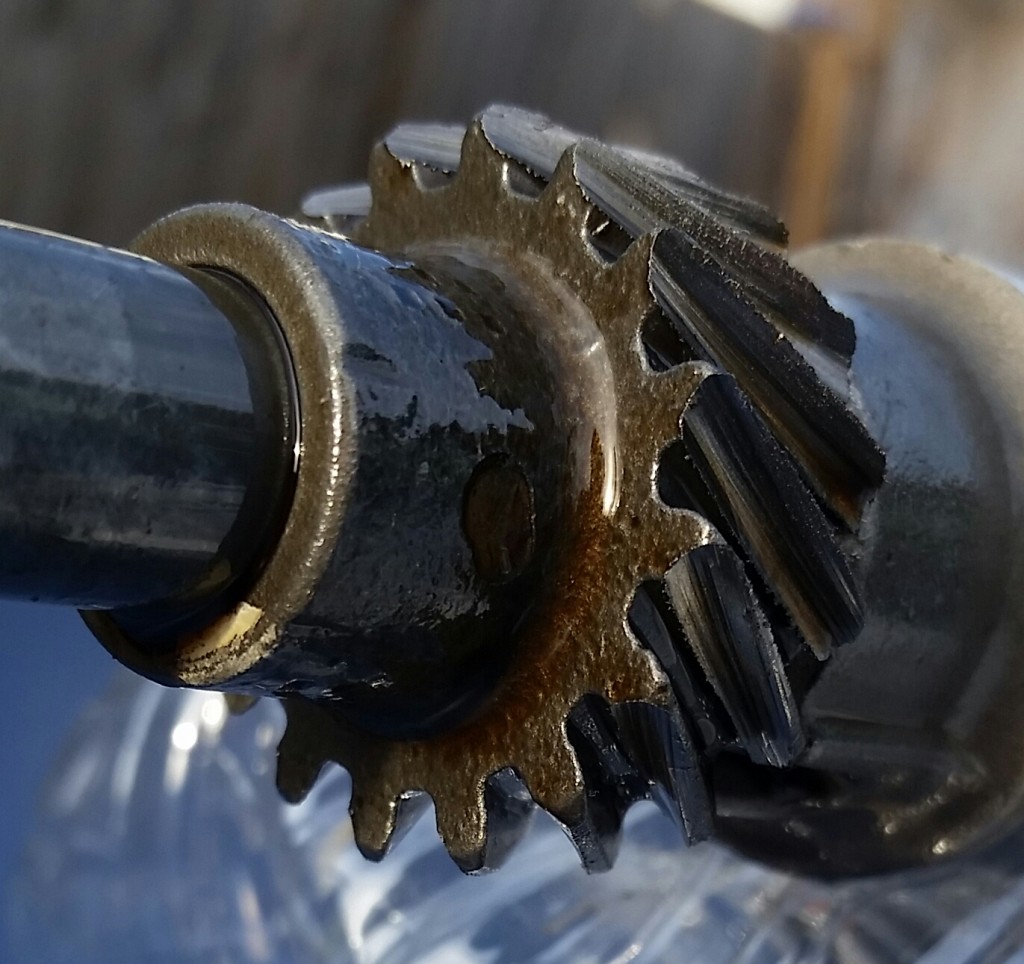So far the parts stores are 0 for 2 on good distributors.

That’s what’s left of the bronze distributor gear on the NAPA Echlin reman I installed in the last post. This gear survived around 1,000 miles at most.
On the other hand, a postmortem on the pair of dead distributors, and a review of the Ford documentation on distributor drive gears, has shown me a likely common cause for both failures.
Ford indicates in the linked document that “very little or no shaft endplay… has been found with new and remanufactured distributors. Improper endplay may force the gear against the support in the block or hold it up off the support, causing damage.”
Before I began the repair, I checked the distributor shaft end play on both the NAPA with the failed gear, and the Rich Porter with the failed rotor plate (after pressing it back on). Both were in the neighborhood of 0.010″ to 0.012″, which is substantially less than the 0.024″ to 0.035″ called for by Ford.
The distributor is a steel shaft in an aluminum housing. As the assembly heats up, the aluminum grows more than the steel shaft, and the end play measurement decreases. If you have too little end play, the end result can be that your clearance goes to zero, trapping the housing between the rotor plate and the drive gear. This could easily either press the rotor plate off its splines, or in the case of the NAPA unit, put so much load on the softer drive gear that it wore out almost immediately.
I needed a rapid fix, and swapped the perfectly good steel gear from the failed Rich Porter onto the NAPA distributor. Since I had to re-drill the roll pin hole in the process anyway, it let me set my own clearance, and set it properly. I set the clearance to 0.032″, and so far I’ve had zero issues since the repair (approximately 1000 miles).
As the NAPA gear wore, it manifested in progressive loss of base timing as the teeth wore away. When I sorted out the cause of the problem I was having (misfire, loss of power and fuel economy), I measured a loss of 6º of base timing on the #1 cylinder. However, #1 was one of the least worn teeth, visible at the bottom in the photo. Based on the wear in the other teeth and the difference in rotational play with the distributor still installed, I was losing at least 10º on the #6 cylinder, where I was seeing the most misfires.
Currently, after a timing re-check yesterday, I’ve lost less than 1º of timing since I set it after breaking the gear back in. Actually, I’d say zero, but my timing light just isn’t that accurate.
As a note on the Ford 300 inline six, there’s very little drawback to setting your distributor shaft end play high. Unlike the V8 engines, the distributor rotates clockwise from the top, and as you can see from the wear on the gear, that means the gear rides up on the plain bearing surface at the bottom of the distributor housing, not on the gear support block inside the engine block. Because of the load of the oil pump, the gear will stay up against the housing steady as the engine is running, so you won’t have a timing variation. A bit more end play just puts your rotor a tiny bit higher in the cap – nowhere near enough to cause an interference.